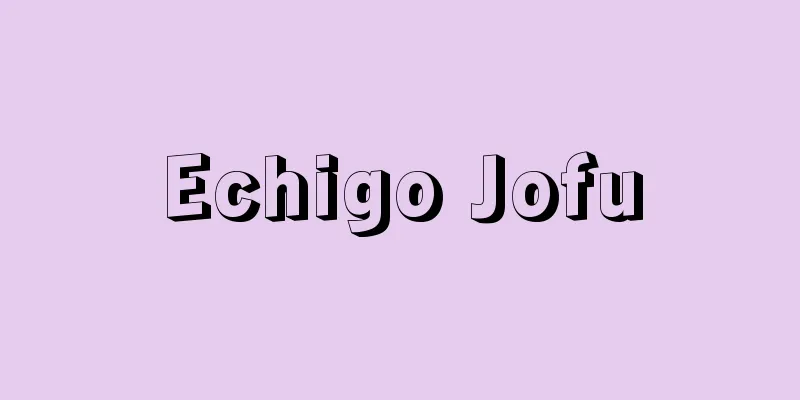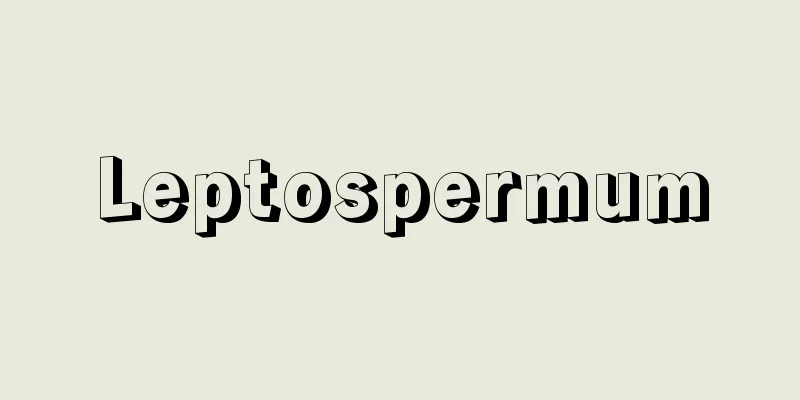Echigo Jofu

|
Among the hemp fabrics produced mainly in Ojiya, Tokamachi, and Muikamachi (present-day Minamiuonuma City) in Echigo Province (Niigata Prefecture), the finest ones are called Jofu. They are distinguished from the Ojiya Chijimi and Echigo Chijimi, which are made from the same material but with a tightly twisted weft thread and shrunk. They were originally developed in this region as a side job during the long winter farming off-season. Today, they are made from ramie (Chome) grown in Fukushima and Yamagata Prefectures, which is spun into thread by hand and woven on an isaribata loom. Many are woven with stripes or kasuri patterns using pre-dyeing, and then bleached in snow. Also, due to the difficulty in obtaining materials and the impossibility of mass production, in addition to those that are called genuine, spun ramie yarn is often used as a substitute. This region has long been known as a producer of hemp fabrics, and it is reported that there are impressions of fabric on pottery from the middle of the Jomon period, and during the Ritsuryo period, Choyofu (traditional Japanese cloth) was presented to the central government. The Azuma Kagami records that in 1192, Minamoto no Yoritomo presented 1,000 bolts of Echigofu to the Imperial Court, and that Uesugi Kenshin also presented hemp fabrics in 1560. With the encouragement of the feudal lord, hemp production increased, to the point where Sato Nobuhiro wrote in his "Economics Summary" that "recently there are cloths called jofu (higher quality) than Echigo (omitted) In both Nara and Omi there are cloths called jofu (high quality), but they are far inferior to Echigo jofu" and during the Tenmei period (1781-1789) the production exceeded 200,000 bolts per year. However, it has since declined, and today the production of hemp cloth for clothing is very small, with the technique being shifted to silk weaving. However, by the end of the Edo period, the industry had developed to the point where manufacturers were controlled by wholesalers, who lent looms, provided materials, and collected the finished products. These traditional techniques, together with Ojiya-chijimi, have been designated as Important Intangible Cultural Properties of Japan as "Ojiya-chijimi and Echigo-chijimi". [Kadoyama Yukihiro] Furthermore, the same name was registered as an Intangible Cultural Heritage by UNESCO (United Nations Educational, Scientific and Cultural Organization) in 2009. [Editorial Department] [Reference item] | |Important Intangible Cultural Property Ojiya City, Niigata Prefecture ©Shogakukan "> Echigo Jofu (woven pattern) Source: Shogakukan Encyclopedia Nipponica About Encyclopedia Nipponica Information | Legend |
|
越後国(新潟県)小千谷(おぢや)、十日町(とおかまち)、六日町(むいかまち)(現、南魚沼(みなみうおぬま)市)を中心に産する麻織物のうち、とくに上等なものを上布とよんでいる。同じ材料でも、緯糸(よこいと)に強撚(きょうねん)をかけて織り込み、縮みをもたせたものは小千谷縮(ちぢみ)、越後縮とよび、これと区別している。基本的には冬の長い農閑期の副業として、この地方に発展した織物であった。現在では福島、山形県で栽培される苧麻(ちょま)(カラムシ)を使い、指先で績(う)んで糸とし、居座機(いざりばた)を使って製織する。多くは先染(さきぞ)めによって縞(しま)や絣(かすり)を織り出し、雪晒(ゆきざらし)をする。また材料入手の関係と、大量生産が不可能なため、本製と称するもの以外に、ラミーの紡績糸を用いて代用することが多い。 この地方は古くから麻織物の生産地として知られ、縄文中期の土器に織物圧痕(あっこん)のあることが報じられ、また律令(りつりょう)時代には調庸布(ちょうようふ)が中央へ貢納されている。そして『吾妻鏡(あづまかがみ)』建久(けんきゅう)3年(1192)には、源頼朝(よりとも)が越布1000反を朝廷に献上、上杉謙信も永禄(えいろく)3年(1560)に麻織物を献上したことがみえている。そして領主の奨励もあって麻生産は増大し、佐藤信淵(のぶひろ)『経済要録』に「近来越後よりも上布と称する者を出す(略)奈良、近江(おうみ)共に上布と称する者あれども、越後上布より大に劣れり」とされるまでに至り、天明(てんめい)年間(1781~1789)には、年間20万反を超えるほどとなった。しかし以後衰退傾向をたどり、現在では麻着尺地の生産はごくわずかで、その技術は絹織物に転換している。しかし幕末には、生産者を問屋制的に支配し、織機を貸与し材料を提供し製品を回収するというマニュファクチュアが成立するまでに発展をみたのであった。これらの伝統的技術は、小千谷縮とともに「小千谷縮・越後上布」として国の重要無形文化財に指定されている。 [角山幸洋] また、同名称で2009年(平成21)ユネスコ(国連教育科学文化機関)の無形文化遺産に登録された。 [編集部] [参照項目] | |重要無形文化財 新潟県小千谷市©Shogakukan"> 越後上布(織紋) 出典 小学館 日本大百科全書(ニッポニカ)日本大百科全書(ニッポニカ)について 情報 | 凡例 |
<<: Echigo Disturbance - Echigo Disturbance
Recommend
Nikola Firentinac
…In terms of sculpture, the Cathedral of Trogir h...
Radial velocity - Shisen sokudo
The line from an observer to a celestial object i...
SCAR
Japanese popular music. Sung by J-POP group, RIP S...
benthos
...Some marine organisms, such as the flowering p...
Rhododendron aureum (English name) Rhododendronaureum
…[Masaaki Kunishige]. … *Some of the terms mentio...
World Gazette - ばんこくこう方 (English)
A magazine published in Chinese by American missio...
Mikuni [town] - Mikuni
Sakai is an old town in northern Fukui Prefecture,...
Aotodomatsu - Aotodomatsu
→ Todomatsu Source : Heibonsha Encyclopedia About ...
Aoi Mountain Range - Aoi Dakesanchi
...The eastern side of the basin is bordered by t...
Genus Cyclops
…Originally, it was a general term for crustacean...
Akiyamago
An isolated paradise located in the upper reaches...
Clarke, M.
...The representative poet of the counterculture ...
David Teniers
Father and son, Flemish painters of the same name...
Buffering effect (blood)
...(3) Blood Acidity and Specific Gravity The aci...
Hydrophile colloid
...the concept of macromolecules or polymers was ...









